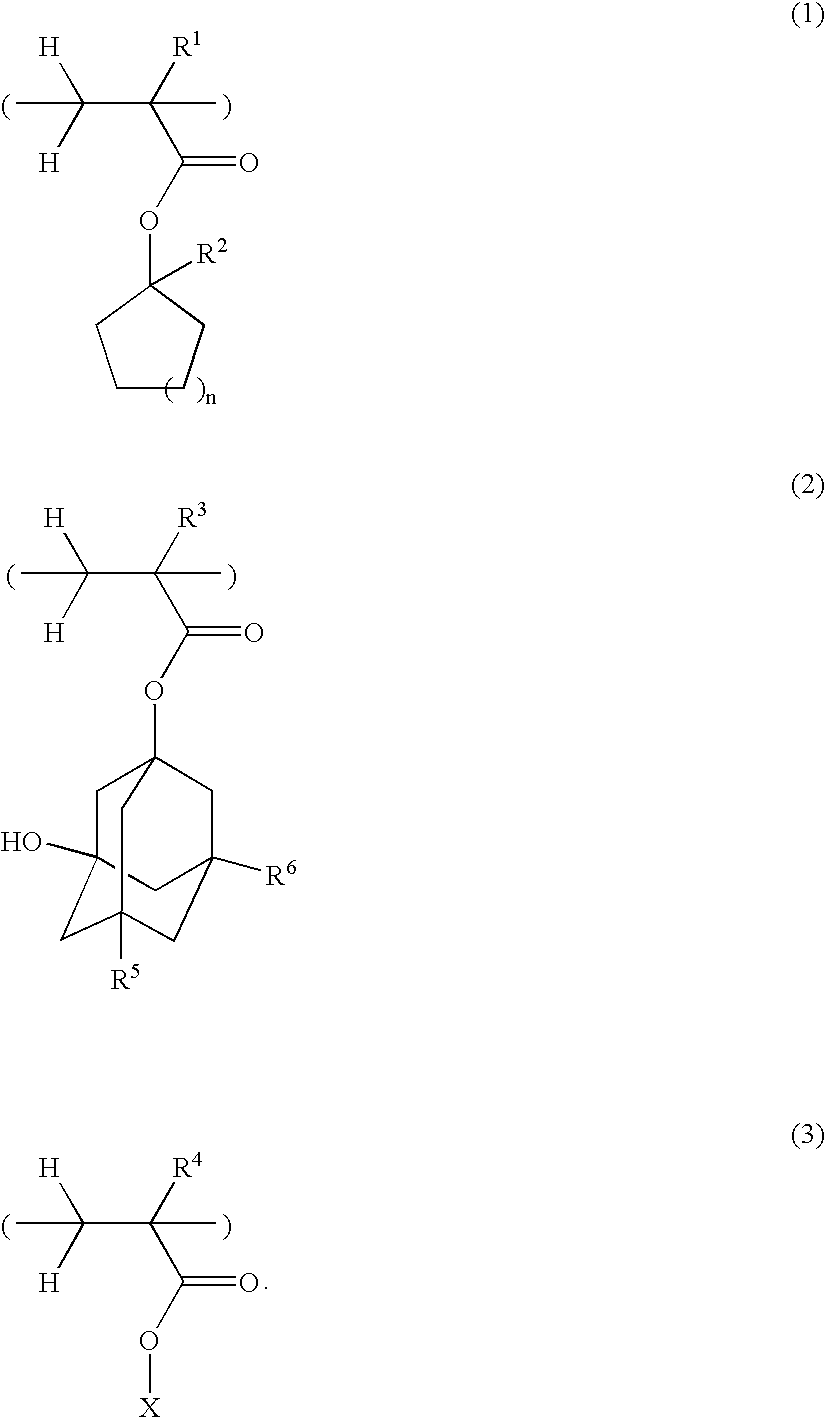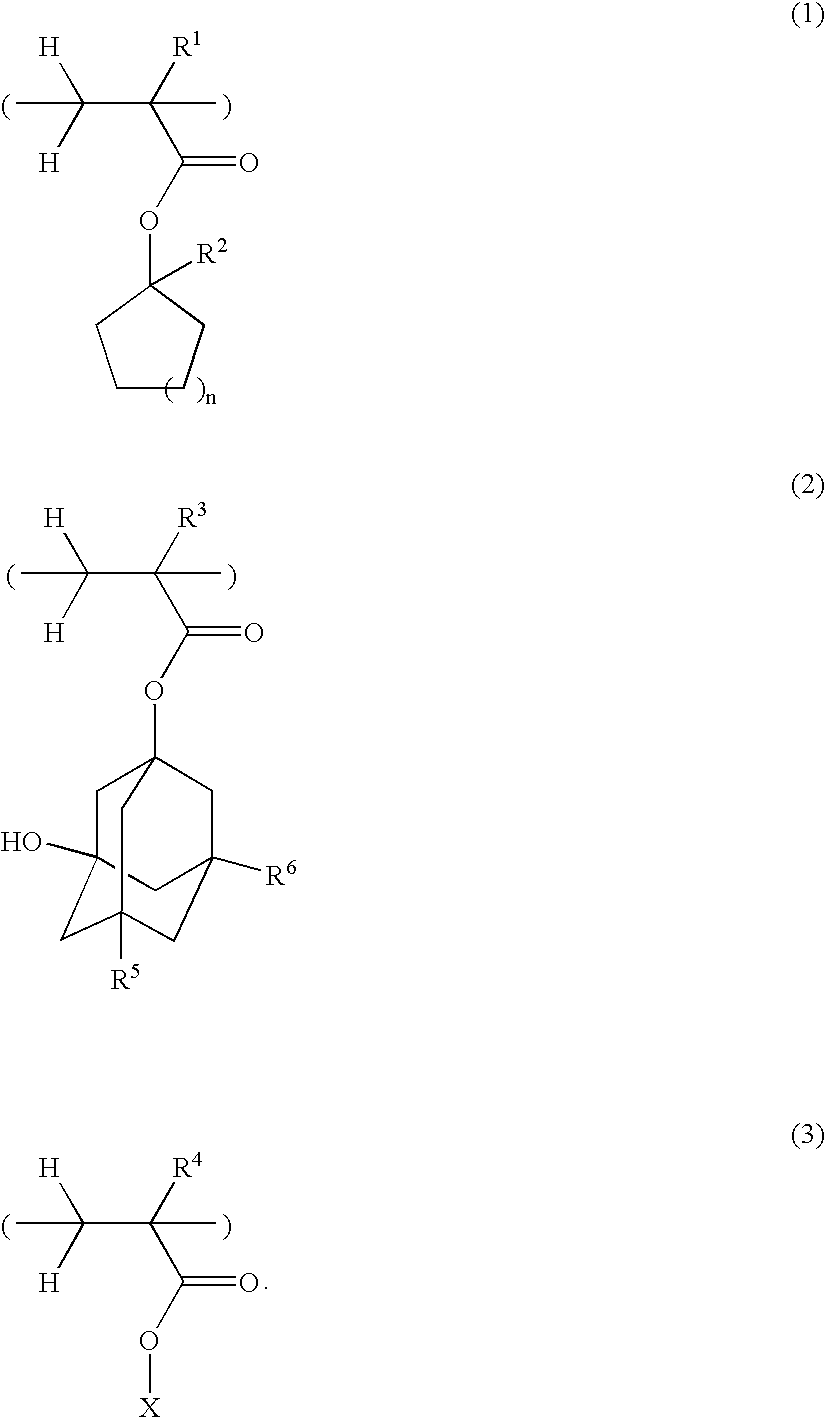Polymer, resist material and patterning processing
a technology of resist material and polymer, applied in the direction of auxillary/base layers of photosensitive materials, instruments, photosensitive materials, etc., can solve the problems of resist film peeling, resin as a whole inevitably becomes very adamant and hydrophobic, and few of these polymers exhibit full performan
- Summary
- Abstract
- Description
- Claims
- Application Information
AI Technical Summary
Benefits of technology
Problems solved by technology
Method used
Image
Examples
synthesis example
[0219]The polymer of the invention was synthesized in accordance with formulation.
synthesis example 1
Synthesis of Polymer 1
[0220]In 150 g of methyl ethyl ketone were dissolved 15.00 g (82.3 mmol) of 1-ethyl-1-cyclopentyl methacrylate, 13.90 g (58.8 mmol) of 3-hydroxy-1-adamantyl methacrylate, 21.10 g (94.1 mmol) of 4,8-dioxa-5-oxotricyclo[4.2.1.03.7]nonan-2-yl methacrylate, 1.51 g (9.17 mmol) of 2,2′-azobisisobutyronitrile and 0.184 g (2.35 mmol) of 2-mercaptoethanol. Under a nitrogen gas stream, the resulting solution was added dropwise in 4 hours to 50 g of methyl ethyl ketone heated to 80° C. After completion of the dropwise addition, the reaction mixture was stirred under heating at 80° C. for 2 hours under a nitrogen gas stream. After completion of the reaction, the reaction mixture was cooled to room temperature. The resulting reaction mixture was added dropwise to 0.75 L of hexane under vigorous stirring to cause precipitation. The solid thus obtained was filtered, and dried under vacuum at 50° C. for 15 hours, whereby 43.83 g of a white solid was obtained in a yield of 87.7...
synthesis examples 2 to 32
Synthesis of Polymers 2 to 32
[0221]Polymers 2 to 32 were synthesized in a similar manner to Synthesis Example 1 or in a known manner.
[0222]
PUM
| Property | Measurement | Unit |
|---|---|---|
| feature size | aaaaa | aaaaa |
| mol % | aaaaa | aaaaa |
| mol % | aaaaa | aaaaa |
Abstract
Description
Claims
Application Information
 Login to View More
Login to View More - R&D
- Intellectual Property
- Life Sciences
- Materials
- Tech Scout
- Unparalleled Data Quality
- Higher Quality Content
- 60% Fewer Hallucinations
Browse by: Latest US Patents, China's latest patents, Technical Efficacy Thesaurus, Application Domain, Technology Topic, Popular Technical Reports.
© 2025 PatSnap. All rights reserved.Legal|Privacy policy|Modern Slavery Act Transparency Statement|Sitemap|About US| Contact US: help@patsnap.com



